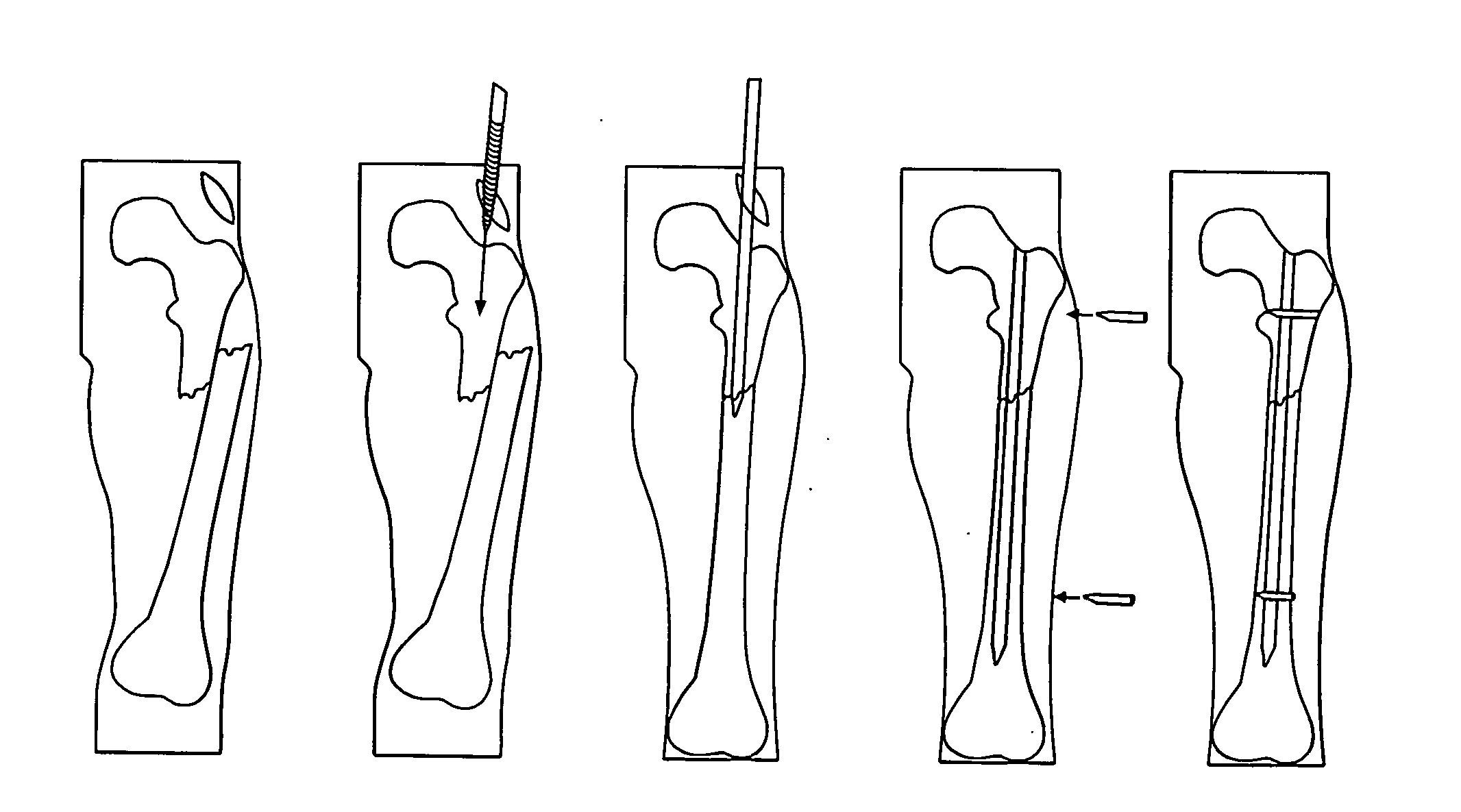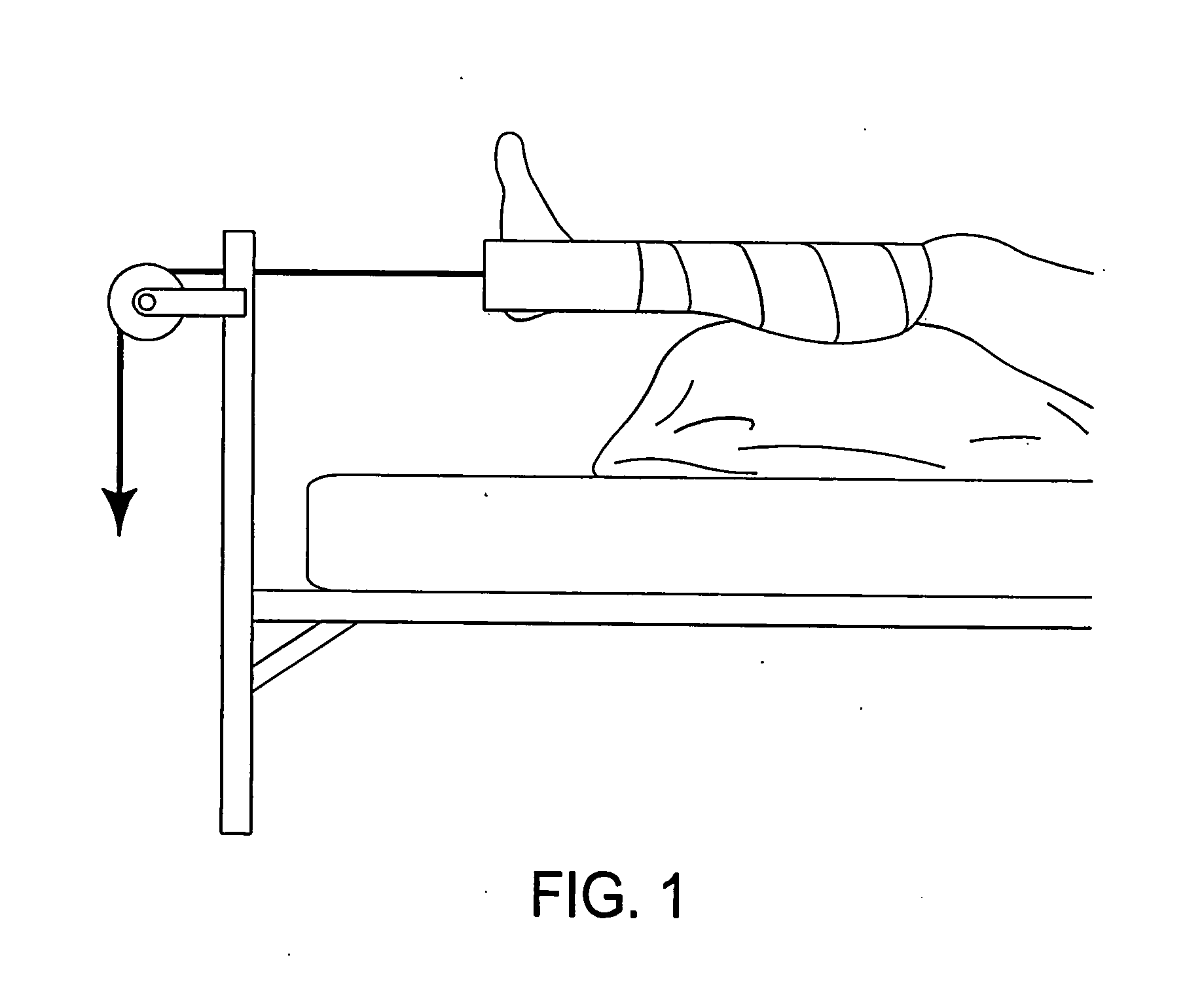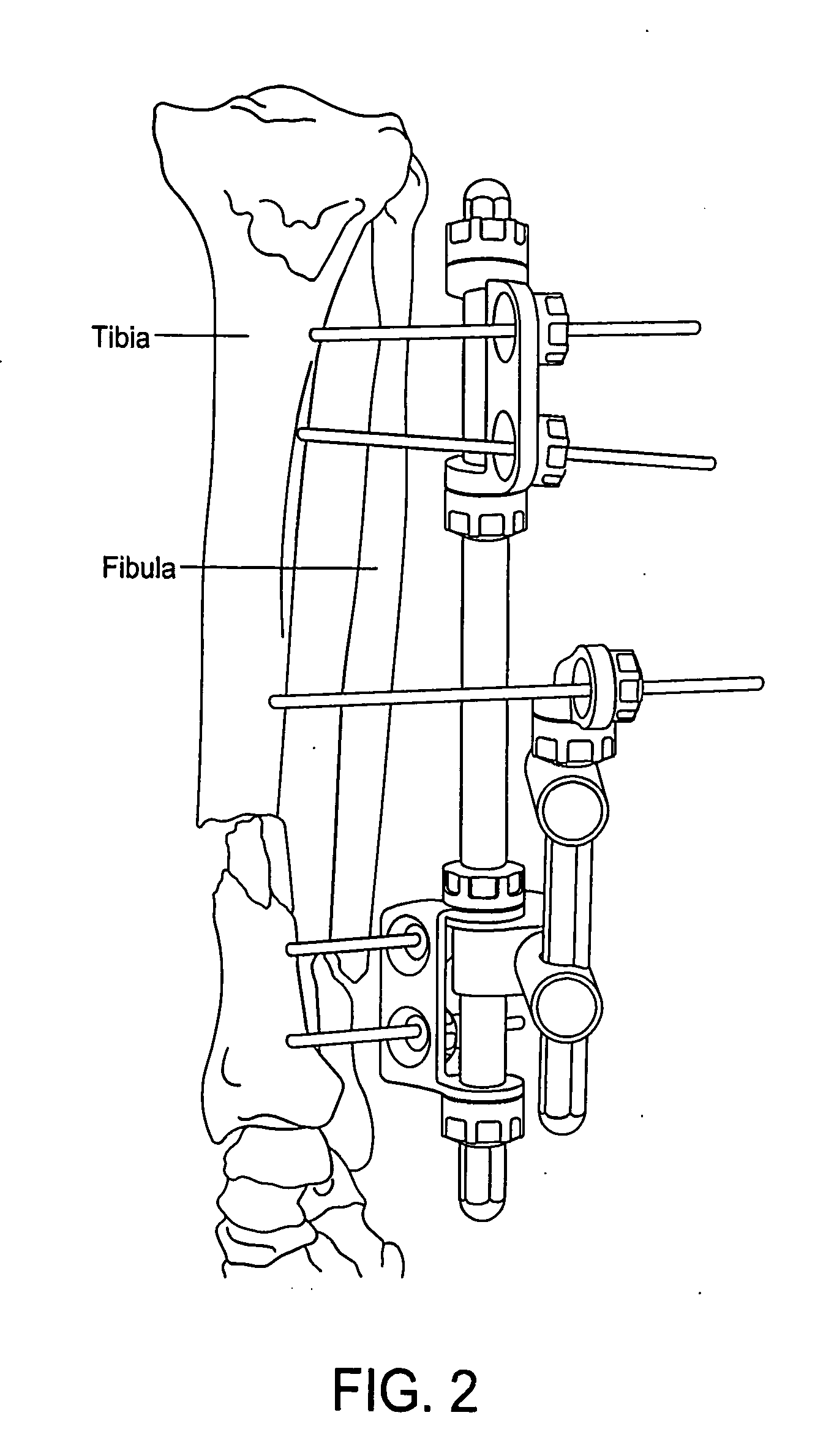Osteosynthetic shape memory material intramedullary bone stent and method for treating a bone fracture using the same
- Summary
- Abstract
- Description
- Claims
- Application Information
AI Technical Summary
Benefits of technology
Problems solved by technology
Method used
Image
Examples
Embodiment Construction
[0063]Novel Intramedullary Bone Stents: Intravascular stents are commonly used in arteries to hold the artery open, e.g., to treat stenosis caused by a buildup of plaque on the walls of the artery. Thus, these intravascular stents are designed to maintain patency of the blood vessel. Intravascular stents are inserted into the artery in a crimped state and expanded to a larger diameter. See, for example, FIG. 10, which shows expanding stents used in blood vessels. To date, stents have not been used in orthopedic applications to reduce a fracture site.
[0064]In accordance with the present invention, and looking now at FIG. 11, there is shown an intramedullary bone stent 5. Intramedullary bone stent 5 is placed into the intramedullary canal 10 of a bone 15, bridging the fracture 20. As the intramedullary bone stent 5 expands, applying hoop stress to the bone 15, the intramedullary bone stent 5 shortens, reducing the fracture 20 and rigidly holding the bone 15 in the correct position. In...
PUM
 Login to View More
Login to View More Abstract
Description
Claims
Application Information
 Login to View More
Login to View More - R&D
- Intellectual Property
- Life Sciences
- Materials
- Tech Scout
- Unparalleled Data Quality
- Higher Quality Content
- 60% Fewer Hallucinations
Browse by: Latest US Patents, China's latest patents, Technical Efficacy Thesaurus, Application Domain, Technology Topic, Popular Technical Reports.
© 2025 PatSnap. All rights reserved.Legal|Privacy policy|Modern Slavery Act Transparency Statement|Sitemap|About US| Contact US: help@patsnap.com



